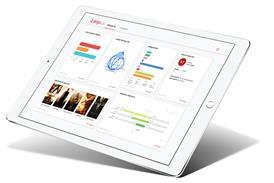Tech Papers 2021 – Page 8
-
 Technical Papers
Technical PapersThe future of media consumption
Media consumption is changing. To predict changes in user’s behaviour the majority of the industry is still relying on ownership of devices and usage of devices to predict media consumption behaviour.
-
 Technical Papers
Technical PapersUser-centric companion screen architecture
Bridging broadcast and internet services can be difficult because the system architectures are typically different.
-
 Technical Papers
Technical PapersAutomatic generation of audio descriptions for sports programs
NHK has developed a means of automatically generating auxiliary audio descriptions from metadata for use in live TV sports programs.
-
 Technical Papers
Technical PapersTogether VR: Shared media experiences in 360-degree
Virtual Reality (VR) and 360-degree video are reshaping the media landscape, creating a fertile business environment.
-
 Technical Papers
Technical PapersExperiments in immersion
Case study: The BBC has over forty VR, 360 video and immersive audio experiments, that teams across the corporation have developed, covering a broad range of topics.
-
 Technical Papers
Technical PapersMedia orchestration between streams and devices
The upcoming MPEG Media Orchestration standard enables the temporal and spatial orchestration of multiple media and metadata streams.
-
 Technical Papers
Technical PapersMoving image demographics: Data mining to secure value
Existing moving image collections face an onslaught of challenges to remain relevant and licensable.
-
 Technical Papers
Technical PapersAuthenticating the TV user by biometrics
Investigating biometric continuous measurements to identify the user holding a remote control.
-
 Technical Papers
Technical PapersPrototyping voice interfaces for media
Voice User Interfaces (VUI) and consumer products are already being used as media devices in the home with estimates of 6.5 million voice-first devices shipped in 2016.
-
 Technical Papers
Technical PapersReal-Time semantic enrichment of video streams in the age of big data
AgileRAI, a framework for searching, organising and accessing multimedia data in a fast and semantic-driven way.
-
 Technical Papers
Technical PapersEnhanced TV service over 3GPP MBMS
The release of 3GPP to enable viable mobile and terrestrial TV services with the integration of rooftop antenna reception and existing TV receivers is a major milestone.
-
 Technical Papers
Technical PapersBeyond HEVC: video coding standardisation
Though High Efficiency Video Coding (HEVC) is still in its take-up phase, it is foreseeable that even better compression will be needed in the future.
-
 Technical Papers
Technical PapersReplacing JPEG 2000
A replacement for the JPEG 2000 (J2K) block coder that offers exceptionally high throughput, with a small reduction in coding efficiency.
-
 Technical Papers
Technical PapersVirtual Reality and Dash
VR has gained significant attention primarily driven by the recent market availability of consumer devices.
-
 Technical Papers
Technical PapersSpecifying colour tolerances for HDR and WCG displays
ABSTRACT With a new high-dynamic-range (HDR) and wide-colour-gamut (WCG) standard defined in ITU-R BT.2100, display and projector manufacturers are racing to extend their visible colour gamut by brightening and widening colour primaries. The question is: how close is close enough? Having this answer is increasingly important for both consumer and ...
-
 Technical Papers
Technical PapersImmersive VR for live action video
The advent of high-resolution head-mounted displays (HMDs) enables new applications for virtual and augmented reality.
-
 Technical Papers
Technical PapersIntroduction to JPEG XS
Video production is characterised by large data volumes, to ease intensive workflows a novel image and video codec called JPEG XS is currently standardised.
-
 Technical Papers
Technical PapersA brightness measure for HDR TV
The industry is taking its first steps in HDR production, as standards for a complete high dynamic range (HDR) television ecosystem near completion.
-
 Technical Papers
Technical PapersTone mapping influences the bit-rate and the bit depth
HDR will need a higher bit-rate because of its minimum quantisation and the fact that the images have much more details in the highlights and shadows.
-
 Technical Papers
Technical PapersBig data for journalism and enhanced business analytics
Big data has become mainstream with the recent evolution of cloud infrastructures, data gathering and intelligence algorithms.

















